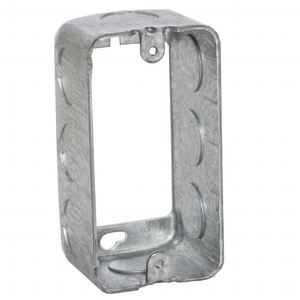I've been trying to install GFCI receptacles wherever an existing receptacle wasn't grounded.
I put this aside because I wasn't sure what to do with it. I won't get into what was there to begin with other than it wasn't good, other than a pretty heavy-duty Bryant receptacle. This was from an existing ungrounded setup and tearing up the walls to add ground is a nonstarter. It's within a cabinet for a microwave and an oven (which is on a separate 240V circuit), and I believe it was an existing wall outlet (over a countertop) before a kitchen remodel.

This is clearly a solder job underneath electrical tape. I've seen another like it in another part of the house, but with a larger junction box. If there was enough wire to work with, I'd cut it off at the point it's soldered, as well as bridge/pigtail with a wire nut. I did something like that previously with a 3-port WAGO 221, but this has even less wire to work with, so I'm inclined to keep it. And that's the smallest junction box I've ever seen. Even with a small receptacle, it was kind of crammed in there with about two inches of twisted wire soldered together for each wire pair. I'm also inclined to remove the electrical tape and cover it with rubber tape. Something like this:
https://www.3m.com/3M/en_US/p/d/b00017540/
However, there's plenty of room in this cabinet (the microwave just sits on a shelf and isn't very deep) and there's no physical reason why a surface mounted box couldn't mounted over it since it's usually hidden. Is there anything that could accomplish that? Preferably something that could just mount right on the wall box screw holes. I'd like something that is easily big enough for a GFCI receptacle where just the wire (and not that soldered wire) could be extended with a wire nut into a surface mounted box.. It's also a huge pain dealing with 12 AWG solid wire in a box this small, as well as that soldered assembly.
I put this aside because I wasn't sure what to do with it. I won't get into what was there to begin with other than it wasn't good, other than a pretty heavy-duty Bryant receptacle. This was from an existing ungrounded setup and tearing up the walls to add ground is a nonstarter. It's within a cabinet for a microwave and an oven (which is on a separate 240V circuit), and I believe it was an existing wall outlet (over a countertop) before a kitchen remodel.
This is clearly a solder job underneath electrical tape. I've seen another like it in another part of the house, but with a larger junction box. If there was enough wire to work with, I'd cut it off at the point it's soldered, as well as bridge/pigtail with a wire nut. I did something like that previously with a 3-port WAGO 221, but this has even less wire to work with, so I'm inclined to keep it. And that's the smallest junction box I've ever seen. Even with a small receptacle, it was kind of crammed in there with about two inches of twisted wire soldered together for each wire pair. I'm also inclined to remove the electrical tape and cover it with rubber tape. Something like this:
https://www.3m.com/3M/en_US/p/d/b00017540/
However, there's plenty of room in this cabinet (the microwave just sits on a shelf and isn't very deep) and there's no physical reason why a surface mounted box couldn't mounted over it since it's usually hidden. Is there anything that could accomplish that? Preferably something that could just mount right on the wall box screw holes. I'd like something that is easily big enough for a GFCI receptacle where just the wire (and not that soldered wire) could be extended with a wire nut into a surface mounted box.. It's also a huge pain dealing with 12 AWG solid wire in a box this small, as well as that soldered assembly.

